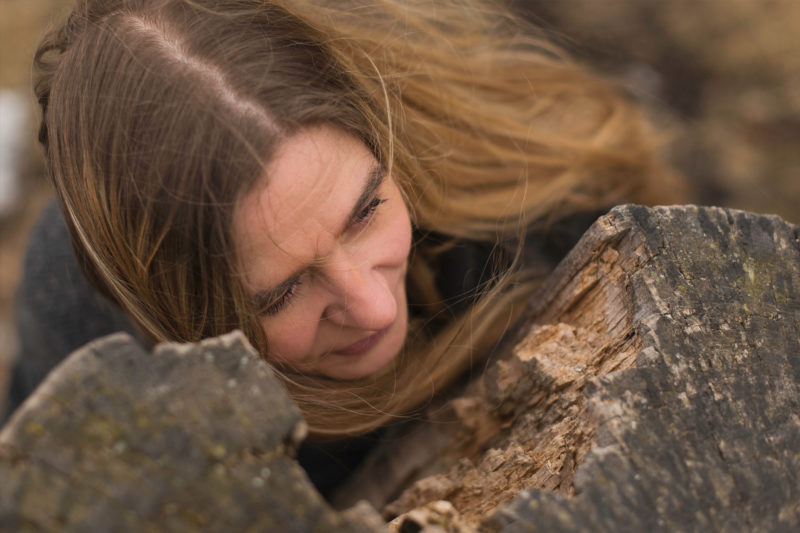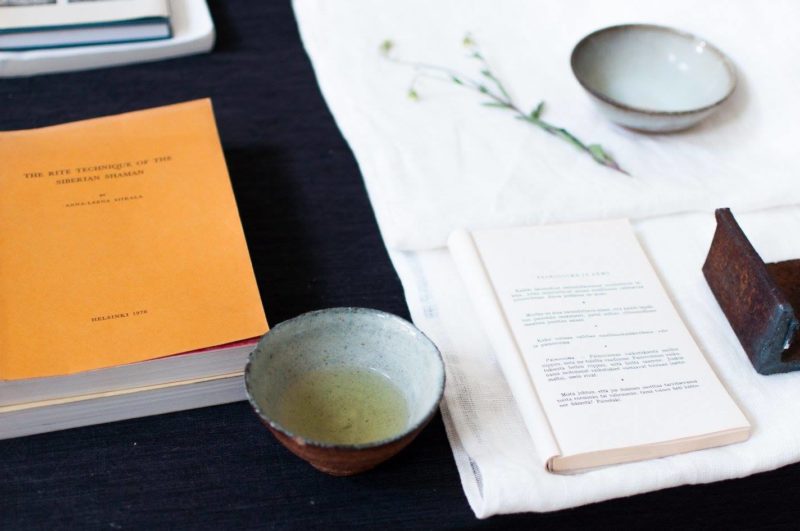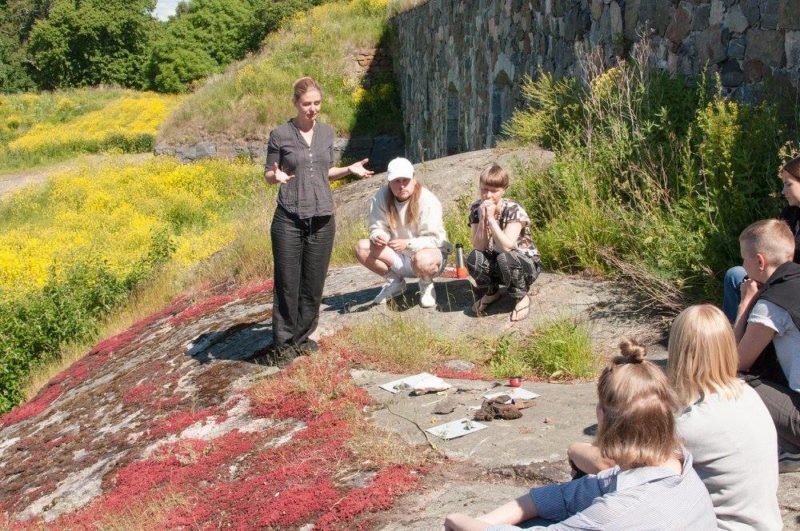12 Jan 2018
News
NOTIONS OF BARE LIFE AND BARE LANGUAGE

Riikka Pelo in conversation with Athanasía Aarniosuo
AA: Can you tell us a bit about the new book, Sacred Springtime?
RP: The working title of my work-in-progress novel is actually now Kaikki elävä (Everything Alive). The previous title, The Sacred Springtime, however, refers to one of the bottom motives of the novel, a legend of sacrificing one generation of youth in order for a community to conciliate their gods and to survive in time of crises. This myth is also to be found in the roots of the juridical figure of homo sacer, the thematical navel of my novel. I deal with the motive and the theme in two different intertwining narratives in the manuscript. The first, ”Tyttö ja kuolema/Turvapaikka”, ”The Girl and Death/Safe Haven”, takes place in our present, overflowing moment and tells a story of two young people and an animal in 2018 Helsinki. The other one, which is still called ”Pyhä kevät”, “The Sacred Springtime” is a mythical and allegorical story and goes back to 8th century BC depicting an actual sacrifice and exile of a group of young people born in the same year. In their wandering the banned youth transforms into creatures, a pact of creatures, with animal soul. The subject of the novel is to explore the experience of characters, human and nonhuman, who have been pushed or drawn to live on verges of society or outside of it. Thematically this also leads to describe dynamics of a community, community based on sacrifice and violence, as our democratic society still in some way is, although it is hidden and unconscious. Through my writing, I search for ways out of these kind of destructive structures. By exploring the potentiality of language, I listen out for possibility of community and communication based not on death, but on everything which is alive.

AA: You say the novel is “related to notions of bare life and bare language”. Does the environment of Suomenlinna help you with these themes?
RP: For me the year in Suomenlinna gave a chance to explore and experience, what does these philosophically loaded concepts mean for me personally, artistically and in relation to my new novel and its characters and their being in language. My own being was marked by aspirations toward states of bareness and vulnerability, but for this I needed to be sheltered, invisible from the eyes of the world, the others’ eyes. The island as a geographical place offered a shelter for gaining back my sensitivity and finding the being, the language and the voice of my characters. HIAP as a community and institute also understood and allowed this bare existence, half secret life of a writer, necessary for me at this stage of writing.
AA: You have also been writing a radio play about urban futures. How do these urban visions develop in the isolation of Suomenlinna?
RP: I focused mostly on writing the novel and had to leave other planned writing projects, also the radio play, ”The Edge of Future”, on the side. However I did tackle on some notions and revelations related to this project, too. And the characters of the story echoed in me sometimes. Also the water, sound of the water, the power of the water, the founding motive of the manuscript (and the city of Helsinki) was present on the island at all times. And I saw the lighthouse of Harmaja, one of my main point of view coordinates, from my window through the year. The radio play, as it is a story of two young women at the verge of new, modern times, is also related to certain urban visions in 1910’s Helsinki, the utopias and dreams around a new unrealised city plan, but also hopeful dreams of living good life at that time, just before the burst of war and independence of Finland. During this year in Suomenlinna, which was also the 100th year anniversary of Finland’s independence, the historical understanding of the people in different classes of society and in the middle of our fairly short urban history in that time deepened in me more rather than articulation of their visions of future, yet. However, both the location and the history of Viaborg fortress/prison island did affect and will continue affecting on reforming the manuscript and enlivening the themes, and also help me understand my questions related to urban experience. Via personal experience on living on the edge of the city, yet on a lively island community, I can now see my subject also more clearly as I go back writing the new version of this work. Very often the ripest fruits of AIR-period follow the actual time spent there.
AA: How much research goes into sculpting a manuscript?
RP: My work of writing fiction is tightly intertwined with research. Each book is always also a research project of its own into the themes, subjects, worlds, languages and narrative forms and composition of it. The novel for me is a narrative genre, which starts from the question: is it possible to tell about x and how. X for me is usually a specific experience, a state of being in a world. I pursue capturing this being as it is being in language. The preliminary background research phase may take even 3 or more years of writing a work of fiction for me. But different forms of research and exploration are present in creation of fictional worlds in other stages of the process too, whether the subject would be more historical, as in my previous book, Our Everyday Life, or thematical and philosophical, as in the current one. My books are born out of both imagining, trying to approach imagined states of being and researching the conditions and medium for them. A quote from the French novelist Marguarite Yourcenar describes very accurately my method of writing, too: ”with one foot in research, the other in magic arts, or more accurately, without metaphor, absorption in that sympathetic magic which operates when one transports one’s self in thought into another’s body and soul”.
AA: What has inspired you lately?
RP: Sleeping, dreams, yoga nidra, power of constant storms on the island, presence of animals and children and pregnant women, deja vus, Simone Weil’s philosophy and especially her texts on personality and sacred recommended to me by HIAP’s technical assistant Paul, Göran Sonnevi’s poetry, especially the Finnish translations of the Unfinished Language and the Ocean, Clarice Lispector, Louise Bourgeois’s night drawings recommended to me by Tanja, the new neighbour on the island, Milja Viita’s video’s and installations, friendship, plant and tree and mushroom souls, essays of Maggie Nelson recommended by Belgian Hiapian An, DocPoint2018-festival catalogue and all films to be seen and missed and imagined soon, Kaukolampi, jazz, music for plants, islands, seeing a fairylike neighbour rehearsing his musical conducting by the window, bardo states, singing, family histories, overcoming crisis and clarity that can follow it, horizons… everything alive…

AA: What’s the next step in your writing career?
RP: During this one year in Suomenlinna I have tried to find my strength and ability to work and write this new novel and I wish to maintain the right tuning I was able to find especially through the final autumn months. One year is a long time to spend as an artist-in-residence but a fairly short time for writing a novel, which in my case seems to last approximately seven years. My steps in writing are not only slow but they are very often heavy. I wish I could learn to take a bit lighter steps in the future.
AA: Is there a book you would have liked to have written?
RP: My previous book, the book of Alya, the poet’s daughter, was a book which was never written and I needed to write it. But to think according to this question seems like an impossibility to me now. Maybe there would be music, paintings, installations, films, which I would have liked to have created, but with literature I am always interested in potentialities more than actualities.
IMAGES COURTESY OF SALLA LAHTINEN / HIAP
PORTRAIT PHOTO COURTESY OF SERGIO URBINA / HIAP
More:
http://www.hiap.fi/artist/riikka-pelo#artist residency
